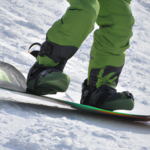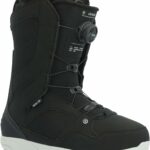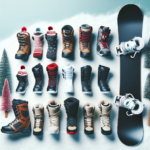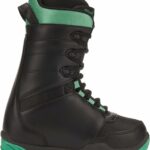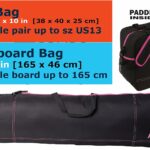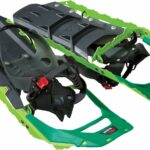Imagine this – you’re on the top of a breathtaking snow-capped mountain, ready to carve your way through fresh powder. The snowboard under your feet promises a thrilling ride down. But wait, a nagging discomfort in your boots disrupts your flow. The culprit? Ill-fitting snowboard boots! The article ‘How To Know If Snowboard Boots Fit?’ offers you practical advice and serves as a comprehensive guide to aid in understanding if your snowboard boots are the perfect size and fit for your feet. Nobody wants their winter adventure to turn into a foot nightmare. Hence, let’s explore the art of finding perfectly fitting snowboard boots.
Understanding the Importance of the Perfect Fit
Snowboarding is an exhilarating sport that combines thrill, speed, and the majesty of nature. However, like every sport that requires specialized equipment, the right gear is essential in snowboarding. Among them, one of the most critical things is having boots that fit perfectly.
Why the proper fit matters
You may wonder why the fit of your boots matters so much. Well, the answer is simple; the better your boot fits, the more control you’ll have over your board. When your boots fit correctly, every move you make with your feet is translated accurately and rapidly to your board. That can mean the difference between cutting a clean and controlled line down a mountain and tumbling down in a snowdrift.
Consequences of a bad fit
On the other hand, snowboard boots that are too loose or too tight can wreak havoc on your ride. Loose boots can cause your foot to move inside them, resulting in less precise control over your board and, even worse, could result in ankle injuries. Boots that are too tight can cause discomfort, impair your performance, and lead to painful conditions like blisters and frostbite.
Analyzing the Different Parts of a Snowboard Boot
A snowboard boot might appear simple—but there’s a lot of innovative science and design behind it.
Breaking down the boot: from the sole to the cuff
Starting from the bottom, the sole of your boot needs to provide both traction and cushioning. Next is the shell, the hard exterior that gives the boot form and offers protection. Inside the shell, you will find the boot liner, which provides padding, warmth, and most importantly, a custom fit. Finally, the cuff and the lacing system work together to maintain your foot and ankle’s stability and control within the boot.
The role of each part in ensuring a comfortable fit
Each part of the boot plays a crucial role in contributing to a comfortable fit. The right sole will cradle your foot and absorb impact, the proper shell and cuff offer enough protection and flexibility, and a well-fitting liner will mold to your feet, providing a snug and comfortable fit.
Key Factors to Consider When Checking for Snowboard Boot Fit
Now that you understand the boot’s anatomy let’s talk about the essential factors to consider when checking if a boot fits correctly.
Boot sizing: numbers versus fit
Boot sizing might be confusing, as not all brands follow the same size charts. Don’t just trust the number on the boot. It’s vital to focus on how it fits. Remember, sizes can vary greatly between brands, and what may be your size in one brand might not be the same size in another.
Width and length considerations
When it comes to foot dimensions, it’s not just about length. Width is an equally essential consideration since boots that are too narrow for your feet can cause discomfort and restrict circulation. Similarly, boots that are too wide may fail to provide adequate control.
Performing In-Store Fittings
Ideally, before you buy a pair of snowboard boots, you should go for an in-store fitting—if possible.
What to expect from a professional fitting
When you go to a professional fitting, expect to have your foot measured for both length and width. They’ll also ask about your riding style and experience level, considering these factors when suggesting a boot flex for you.
Signs that boots tried on in-store fit well
Remember, new boots shouldn’t be painfully tight; they should feel snug. Your toes should lightly touch the boot’s ends when you’re standing straight, and they should pull away slightly from the end when you bend your knees and ankles. Also, look for even pressure all around your feet, with no painful pressure points.
Checking The Boot Liner Fit
If you can’t get to a store to try on the boots, there are ways to check the fit at home, focusing on the boot liner.
How to properly assess liner fit
You should be able to wear the liner like a slipper, with your toes just brushing the front. The fit should feel comfortable and snug, without any noticeable pressure points.
Coping with minor liner fit issues
If you experience minor fit issues, don’t forget that the liner is designed to break in and conform to your foot. However, if you experience significant discomfort, it could be a sign that you need a different size or a boot with a different shape.
Testing Snowboard Boot Flex
The flex of a boot refers to how much give it has when you lean forward in it. How stiff or flexible a boot is can dramatically affect your riding style and comfort.
Importance of the boot flex in the fitting process
The flex of a boot can affect not only your riding style but your comfort levels as well. Don’t overlook this when trying on boots.
Identifying the right flex for your skill level and style
If you’re a beginner, you’ll likely want a softer flex which is more forgiving and easier to navigate with. More advanced riders or those who like hard, fast runs might prefer a stiffer flex for better control and response.
Assessing Boot Fitting at Home
Many snowboarders order their boots online or can’t get to a store for proper fitting. If that’s you, here’s how to assess boot fitting at home.
Essential steps for a home fit check
First, wear your usual snowboarding socks, then insert your feet into the boots. Push your toes forward until they lightly touch the end. Bend your knees and lean forward like you’re snowboarding. Your heels should not lift, and your toes should pull back slightly from the toe cap. Lastly, the boots should feel comfortably snug but should not cause pain or significant discomfort.
Common errors to avoid when trying on boots at home
Avoid lacing up the boots too tight to compensate for excessive room, also don’t assume uncomfortable boots will become comfortable over time. Remember, a great fitting boot feels good right from the start.
Identifying and Addressing Common Fit Problems
Sometimes, even after careful measuring and assessment, you can still experience fit problems.
Common symptoms of a bad fit
These could be painful pressure points, numb toes, or loss of circulation, excessive foot movement within the boot, or heel lift when bending your knees.
Solutions to common fit problems
Pressure points or painful areas can indicate that your boots may be too tight while wayward foot movement or heel lift often means your boots might be too big. Each of these issues might require a different solution, like trying a different boot model or size, or using insoles or footbeds to achieve a better fit.
Blurring the Lines: What to Do When You’re Between Sizes
Knowing your foot size doesn’t always make finding the perfect fit straightforward, especially if you’re between two sizes.
Dealing with ‘in-between’ sizes
If you’re stuck between two sizes, the best rule of thumb is to try both on. A slightly larger size with a thin but warm sock might feel great. Similarly, you might find a smaller size, to be perfect without feeling restrictive.
Picking the right size when you’re on the cusp
Always remember that comfort and control are key. If the smaller size creates discomfort but offers better control, you’re better off going for the slightly larger size instead, as long as your foot isn’t sliding around in it. You want the smallest size boot that still allows all-day comfort.
Maintaining a Good Fit Over Time
Even after you’ve found the perfect pair, your job isn’t over.
Ensuring continued comfort and performance
Proper maintenance can help your boots last longer and stay comfortable. This includes drying them out properly after each use, occasionally taking out the liners to air them, and lacing them correctly each time.
When is it time to replace your boots
Eventually, all good things must come to an end, and this includes your snowboard boots. If you notice decreasing performance, a less comfortable fit, or the boot material wearing down or cracking, it’s time to replace your boots.
The crux of the matter is, a well-fitted snowboard boot can dramatically improve your performance on the slopes, ease your progression and make your snowboarding experience way more enjoyable. So give due diligence to finding your perfect boot fit – you won’t regret the effort when you’re gliding down the mountain with control and comfort.
- What Snowboard Bindings Should I Get? - January 23, 2024
- What Size Screws For Snowboard Bindings? - January 23, 2024
- How To Snowmobile On Water? - January 23, 2024





